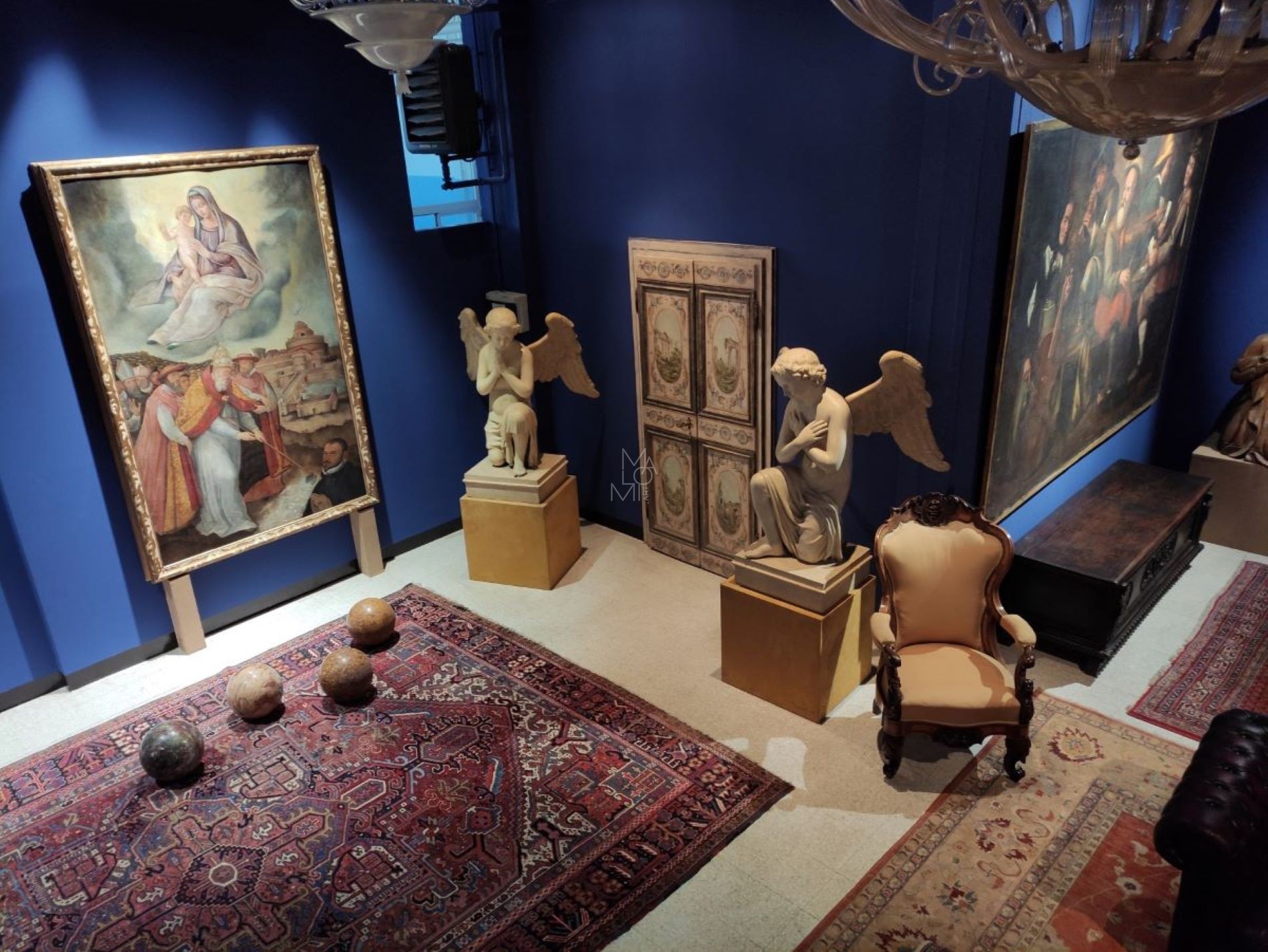All round bronze sculpture depicting "Little peasant girl". Signed GIOVANNI DE MARTINO
Bronze sculpture in the round depicting "Little peasant girl". Signed GIOVANNI DE MARTINO (1870-1935/38).
Giovanni De Martino (Naples, 13 January 1870 - Naples, 3 March 1935) was an Italian sculptor active in Paris. De Martino was an artist of classical style, known for producing sculptures of small bronze busts, particularly portraying the characteristic 'scugnizzi', fishermen and commoners with realistic features. He trained at the Academy of Fine Arts in Naples under Stanislao Lista, Gioacchino Toma, and Achille D'Orsi: from the latter he learnt the ability to portray the most realistic details by using them on very young subjects. At a very young age, he moved to Paris where he executed small sculptural groups, exhibiting frequently at the Paris Salon where he won the Louvre Museum prize for his bronze work Le Pêcheur de criquets (The Locust Fisherman, Naples, private collection). Returning to Naples, he reverted to a socialist realism and produced sculptures depicting typical Neapolitan types, especially brats, children and young fishermen.
From 1916 to 1931, he was the master of sculptor Angelo Frattini. Thereafter, the dominant theme of his production was childhood, and in particular pensive, sad, gaunt children were represented in his works, on whose faces the signs of abandonment and suffering surfaced. De Martino became known by the nickname 'The Sculptor of Children'. He took part in numerous national and international exhibitions, in particular between 1900 and 1929: he exhibited in Naples from 1892, in Paris from 1900, in St. Petersburg in 1902, in Rome in 1903, in Venice in 1905 and in Rimini in 1909, and then in Munich in 1922, 1924 and 1928. In 1916, a sculpture entitled Bimba pensosa was purchased by the Regional Art Gallery of the Academy of Fine Arts in Naples. He participated several times in the Venice Biennale (1907, 1922, 1924, 1928, 1930). In 1929 he exhibited at the exhibitions of the Fine Arts Union of Campania, and was then present at the Society for the Promotion of Fine Arts in Naples in 1910 and at the Spring Florentine Exhibition in Florence in 1922.
His adolescent and childish themes are rendered with such extraordinary effectiveness that Benito Mussolini himself was greatly fascinated by them at the 1931 Quadriennale in Rome (January-June), where he presented himself with friends 'Italian artists from Paris' including: Gino Severini, Filippo de Pisis, Massimo Campigli. De Martino's works can be found in a number of national and international museums: the Louvre Museum, the Civic Museum of Modern and Contemporary Art Castello di Masnago, in Varese, the Museo Casa Natale di Michelangelo Buonarroti, Caprese Michelangelo, in Arezzo, the Galleria dell'Accademia in Naples, the Federico Zeri Foundation Museum, University of Bologna, the M.A.X. museum, Municipal Collection in Chiasso, Switzerland, Fortunato Calleri Museum in Catania.
Restorations
Dimensions in centimetres
Length 24
Depth 19
Height 40
